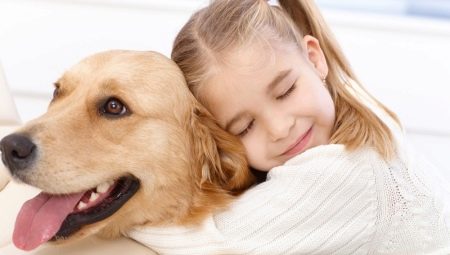The dog has been a true friend of man for several thousand years. But to start it in a house with children is much more responsible than where only adults live. Here you need to thoroughly and deeply know the characteristics of specific breeds and be able to choose the right animal.
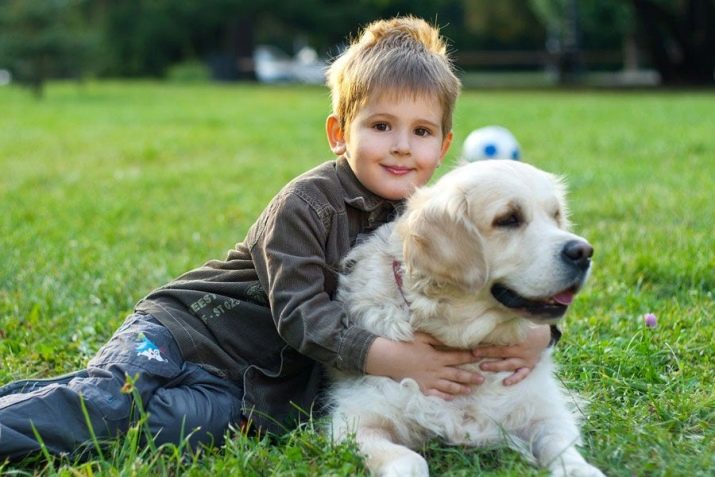
Requirements
As even at least some experienced dog breeders know perfectly well, the ideal of a dog is obviously unattainable. It was by no means in vain that hundreds and even thousands of breeds were bred, each of which is distinguished by its unique set of features. But there are several points that are strictly required when choosing a pet for a family with children. In the first place by all means is the absence of any aggression against the owners. As practice shows, sometimes children and representatives of severely apparently protected breeds love children.
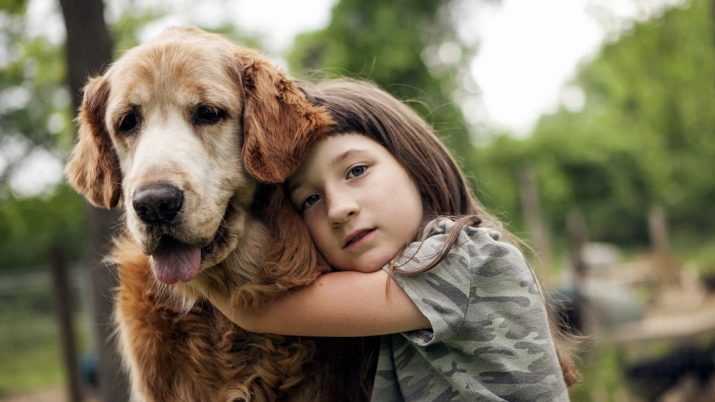

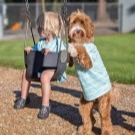
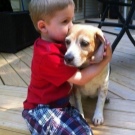
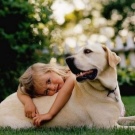
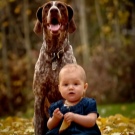
Such a companion in the yard, on a walk, in the porch or elevator will not allow to encroach on the child. But if the dog in a normal situation begins to show itself rude, cruel or somehow strange, you need to get rid of him immediately. Such animals are even more dangerous than explosive devices because of their unpredictability. However, even if the purchased pet is compliant in nature, this does not guarantee success.
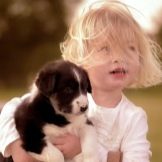
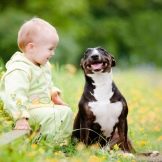
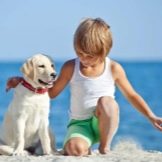

The next important parameter is the dimensions of the beast. Any dog grows much faster than a person. It is sometimes surprising how quickly, initially, a miniature individual reached the sizes provided for at the genetic level. This circumstance is important to consider when choosing a particular breed. Outbred puppies can grow not only quickly, but also in completely unpredictable ways. Even experienced veterinarians and dog handlers cannot always predict the outcome of this process.
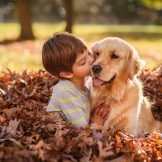
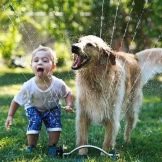
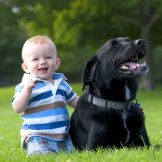

A big risk is the choice of both very small and giant dogs. Already in 3-4 years, children can accidentally cause injury to the "baby". At the same time, the grown "giants" sometimes injure the children themselves without malicious intent. And no check for maliciousness will help here. After all, it is all about the elementary laws of mechanics.
As for the choice by gender, then everything is purely individual. It is best to consult a specialist. However, with competent training, this factor is almost leveled, since any dog can be instilled with suitable qualities. Another circumstance is much more important - pets should be safe for children. This is expressed in:
- the absence of infectious diseases;
- the absence of parasite lesions;
- minimal spread of allergens.
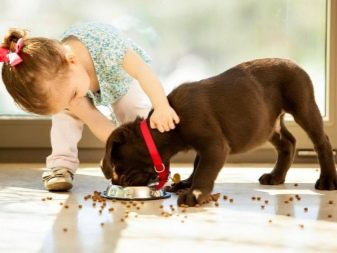
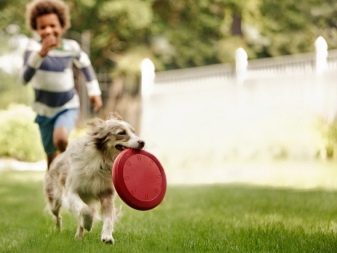
If the child suffers from an allergy (even food or seasonal - it does not matter), an analysis of the potential reaction to canine allergens should be carried out. In the absence of negative reactions of this kind, you can safely choose the right animal. But additional consultation with allergists is required. But to select exclusively hairless dogs for children suffering from allergies is almost pointless. Sometimes even densely overgrown, but not shedding individuals are quite safe. Moreover, completely “smooth” dogs can intensively distribute an even more active allergen - their own saliva. By the sum of the factors causing allergies, the most attractive choices are:
- dwarf poodles;
- bedlington terriers;
- Chinese crested;
- Shih Tzu
- Giant Schnauzers;
- Russian terriers.

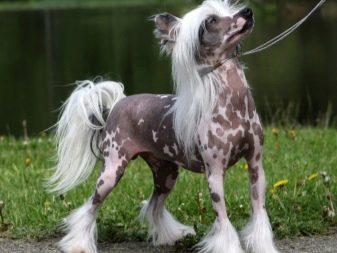
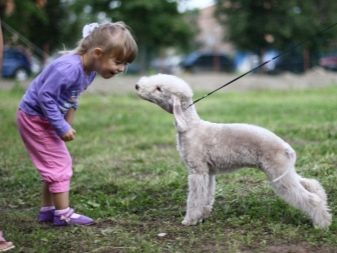
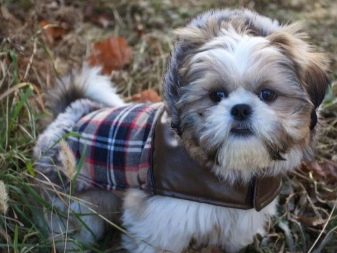
Lack of hair can even be a bad thing. After all, unpretentious dogs are urgently needed that can live quietly in the Russian climate. Therefore, the approach to the size of the hairline must be carefully thought out and balanced. Another of the requirements for four-legged companions of children is the size of the animal. Very small breeds often have a complex disposition, are prone to hysterical reactions to various stimuli.
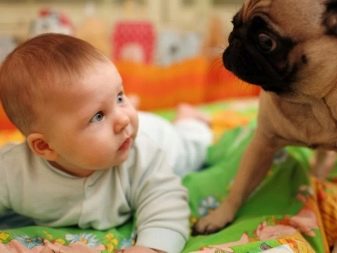
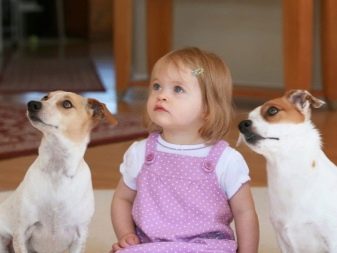
They usually lack balance and calm. But there is still a number of relatively small breeds that can behave calmly. You should also pay attention to the following points:
- breeder's reputation;
- pedigree of the animal;
- his color.
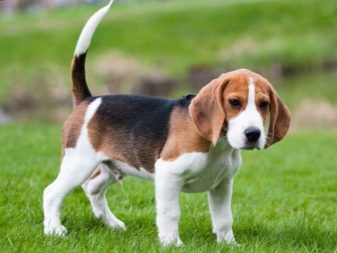
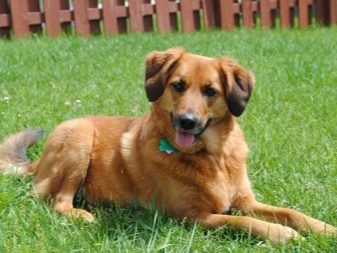
Popular breeds
One of the best breeds for families with children always includes Labrador Retriever. This variety is included in most thematic ratings. Labradors literally adore children with whom they have been in contact. The slightest danger of causing him any insult is completely excluded. The dog is very friendly and full of energy. But it is precisely the latter circumstance that somewhat limits the prospects of this breed. In the heat of the game, a four-legged pet can not always act quite restrained. Sincerely wanting to express his positive emotions and show affection, he knocks the kids off his feet. Labradors retrievers are not bad for children from 4-5 years old.
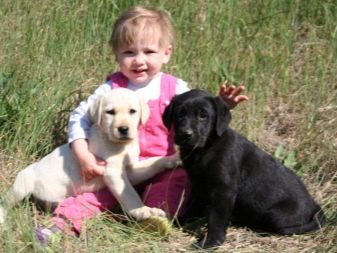
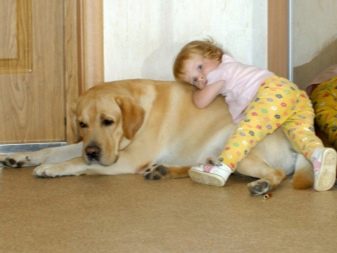
Universal age owners golden retriever. They are also quite active, but more restrained in behavior. Such a pet will gladly fulfill any command. At the same time, he is notable for his good intellect and will always be able to help if he discovers any feasible problem for himself. Golden retriever tends to track the situation in the whole family. Therefore, adults also do not feel deprived of attention.

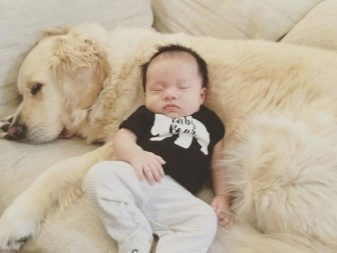
Another dog that is suitable for children is welsh corgi (one of the varieties in the large group of shepherd dogs). Corgi is characterized by cheerfulness and activity. They can behave fearlessly if the owners are in danger. Developed intelligence and the ability to quickly resolve emerging problems will also please the owners. These small dogs perceive children as a herd that must be carefully guarded and patronized.True, Corgi is recommended for mature and well-developed children. Nevertheless, this breed can cause some inconvenience due to its physical activity.
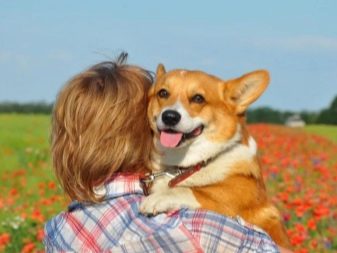
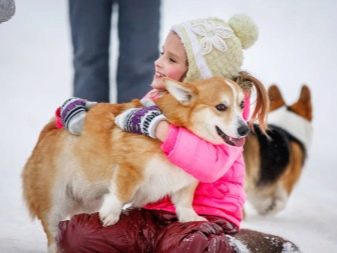
A good alternative is considered irish setter. He is also cheerful and smart, distinguished by an affectionate disposition. “Irish” is also loved for their beautiful appearance. This dog treats children exceptionally well. She is considered the perfect choice, regardless of the specific age of the owners. But also saint bernards manifest themselves no worse. They are characterized by constant fuss with smaller "members of the pack." Outward calm and composure should not be misleading. If necessary, St. Bernard will immediately respond to any incident.
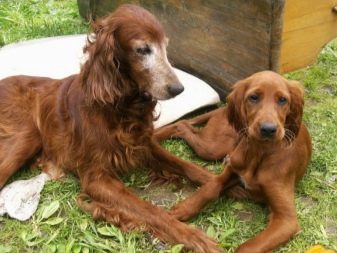
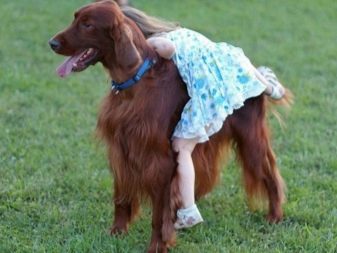
He constantly monitors everything around him, and woe to the attacker who ignores this. There is only one drawback of this alpine dog - these large and heavy dogs are not suitable for an ordinary city apartment. But if this circumstance does not scare people, they can have a Newfoundland instead of a St. Bernard. Its undoubted positive features are:
- lack of excessive viciousness;
- patient and gentle nature;
- tendency to oversee children.
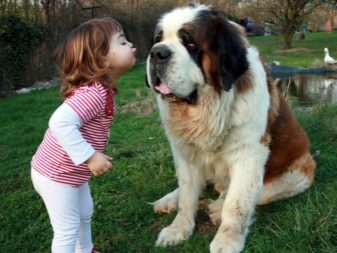
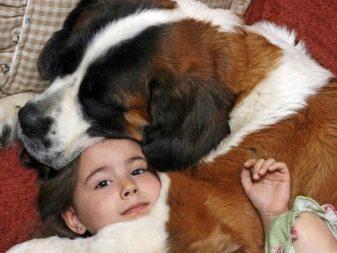
If preference is given to small breeds, then a pug will be a very good choice. Its strengths will be:
- quick wits;
- affectionate disposition;
- affection for the owners;
- relatively low activity;
- sociability;
- good learning ability.

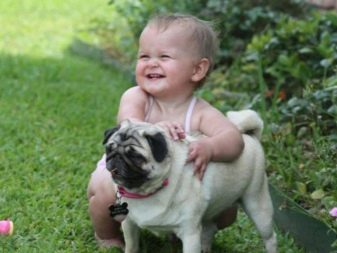
Pugs are suitable as a gift to a calm child. They do not need long walks. However, you will have to communicate with these dogs more often so that they do not get bored.
And from the hunting breeds deserves attention beagle. He is distinguished by a joyful disposition, good naturedness towards people. Beagle is worth buying for those who can provide him with constant communication and games in a large company. Another breed name that is suitable for children is american cocker spaniel. These dogs are very charming and always have a positive attitude. But their high mobility can somewhat overshadow the situation. At the same time, cocker spaniels look very attractive.
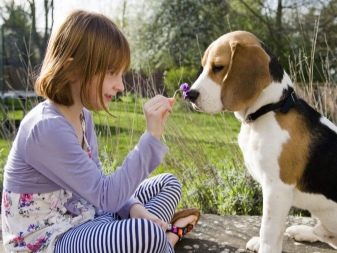

Among medium-sized animals, the top suitable for children German Shepherd. The lateral branch - VEO also belongs to it. Along with excellent official features, she is very kind and complacent towards family members. Powerful intelligence allows the shepherd to clearly distinguish between normal situations and aggressive behavior of others. Therefore, they do not attack without reason, but if necessary, they will act quickly and mercilessly.
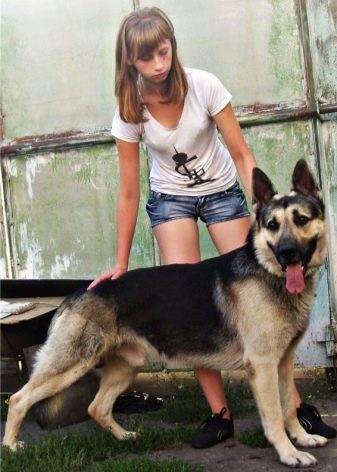
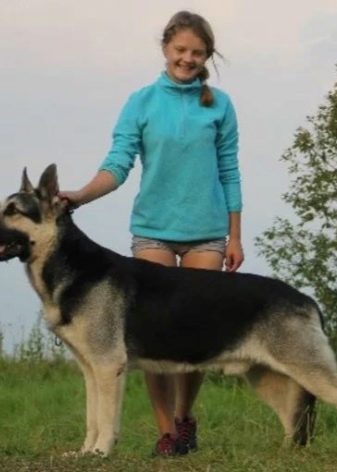
Skillful education will turn the shepherd into a patient and calm guard. She will prove especially well in relation to school-age children and adolescents. In such a pair, the disclosure of the positive properties of the breed occurs easily and naturally, naturally. But if for some reason the German Shepherd does not like people, they can opt for a collie. Scottish Cattle Dog:
- affectionate;
- excellently trained;
- shows smartness;
- very devoted;
- willingly joins the game;
- mastering new skills and unusual situations without problems.
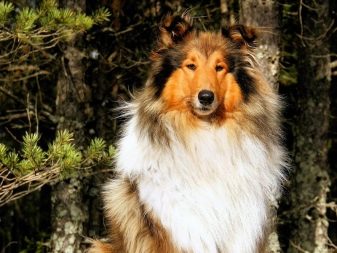
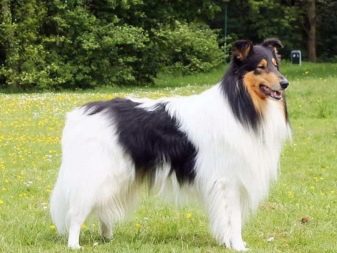
Collie is recommended for children of all ages. But there is a nuance - it is necessary to control the correct attitude of children to these dogs.
And of the immigrants from the British Isles, another breed deserves attention - Yorkshire Terrier. It is modest in size, which does not prevent the dog from being fully developed intellectually. It should be remembered that Yorkies are distinguished by the fragile structure of bones, and their coat needs to be looked after more actively than when choosing other dogs. But a separate conversation deserved and unsuitable for children breeds. These include:
- Dobermans;
- Alaskan Malamutes;
- American Staffords
- bullmastiffs;
- likes;
- Pekingese
- Husky
- Caucasian and South Russian Shepherd Dogs;
- pit bulls;
- rottweilers.
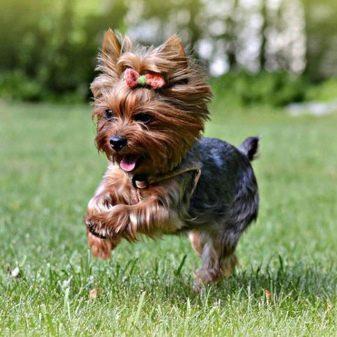

How to choose?
But when choosing a dog breed for a child, one must focus not only on its general suitability. A very important point, especially when keeping a pet in a private house, is that it is odorless. Even with the most active care, with constant ventilation and maintaining cleanliness, the unpleasant odor exuded by the animal will be constantly renewed. Exceptions to this rule are “bare” species:
- Peruvian dog
- Chinese Crested;
- american terrier.
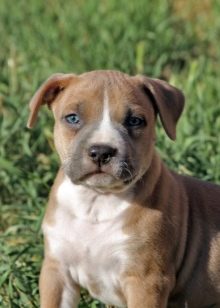
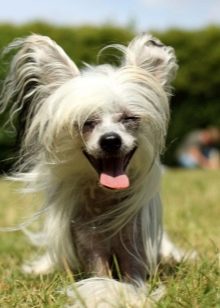
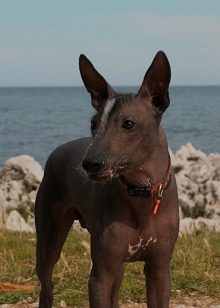
However, it is important to understand that the absence of hair does not only mean that the smell will cease to accumulate. You will have to carefully take care of the bare skin of the pet and constantly wash it. Active sweating creates a different, no less “pleasant” smell than a woolen one. Fat secretions, mixed with dust, will spread throughout the house unpredictably. The naked dog will have to be warmly dressed in the winter, lubricated with special creams in the summer and systematically epilated.
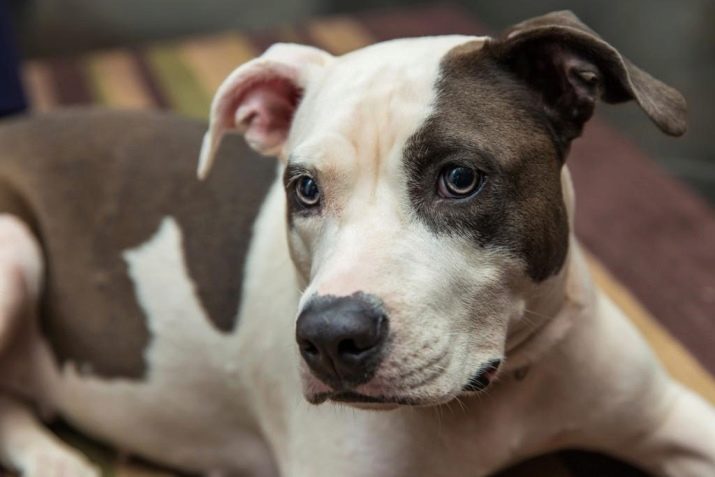
The output for those who want to get a minimally smelling animal is the choice of breeds with long hair without undercoat. The appearance of such pets looks more like human hair than dog hair. For information: it is the undercoat in animals that actively absorbs sebum and begins to exude an unpleasant odor. If there is no undercoat, even wet dogs do not usually smell. The most popular of these breeds is the Yorkshire Terrier.

But any coin has a flip side. The special structure of the wool leads to the fact that it rapidly absorbs odors. Therefore, animals will have to bathe at least once a week. If they actively walk along the street or hot weather has come - even more often. For the same reason, it will be necessary to carefully monitor that the animal does not climb into garbage cans, landfills, and other contaminated places. The washed dog will need to be thoroughly dried, otherwise it may cause a catarrhal disease. The hair of the Yorkshire Terrier and similar dogs needs to be combed out systematically. To reduce odors, small individuals can also be selected. The smaller the animal, the less intense the aroma emitted by it.
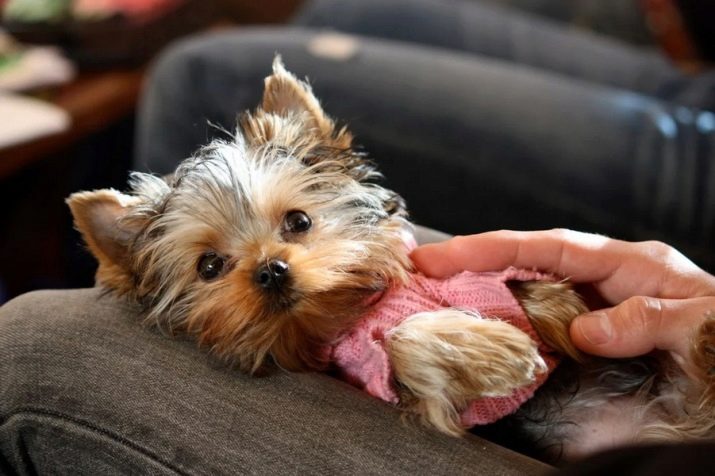
Poodles, despite the presence of undercoat and well-developed coat, practically do not smell at all. And under the condition of frequent and accurate washing, the characteristic “amber” will generally disappear. Puppies for keeping in families with an infant deserve a separate discussion. Many owners of animals simply give them somewhere "to the side", fearing negative consequences for the baby. But in fact, such worries are groundless. The main thing is that the pet should not be excessively aggressive.
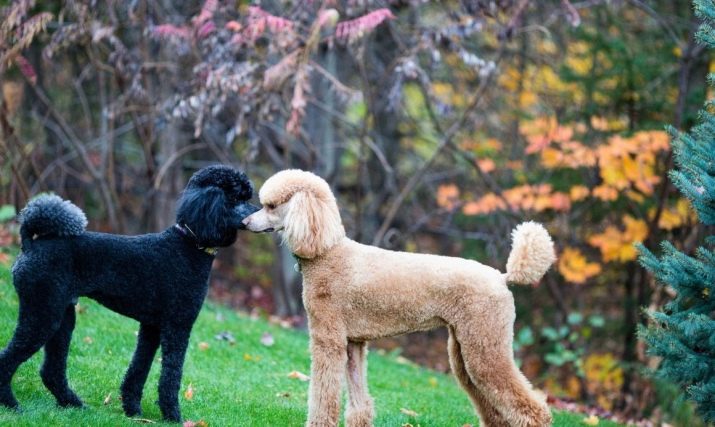
For kids, you need to select animals that implicitly obey the owners. The slightest disobedience must be completely eradicated. Unacceptable manifestations on the part of the dog, such as aggression with:
- combing the hair;
- bathing;
- touching the food bowl;
- ear cleaning.
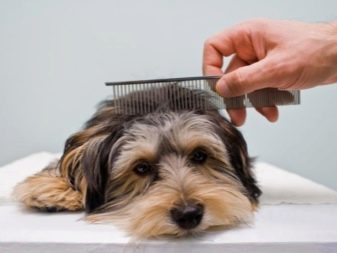
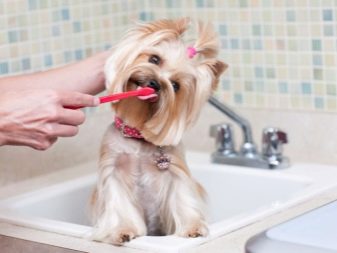
Another important topic for beginners in dog breeding is how to choose a breed suitable for the apartment. In urban housing, small and medium-sized individuals are usually the best choice. However, they must be very carefully selected according to temperament and the intensity of distribution of allergens. The larger the pet, the greater should be the area in which he lives. It is necessary to spread the place for lying and the feeding trough as far as possible, and this is not always possible.
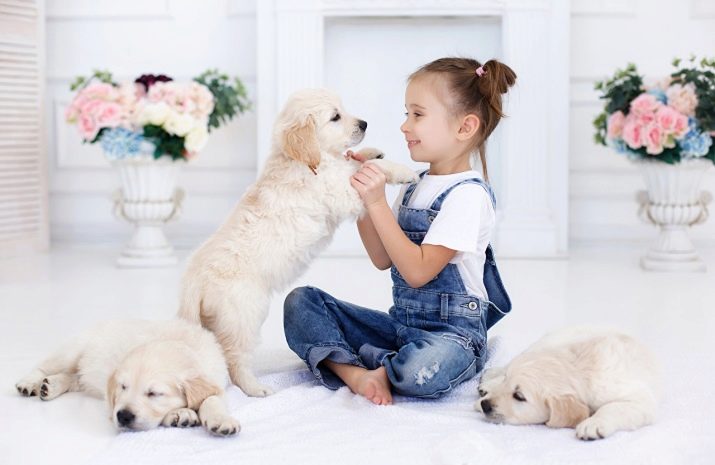
But when choosing a dog for an apartment, you also need to pay attention to temperament. The more active the animal, the more vigorous his nervous system, the more problems may arise with neighbors. Theoretically, removing excessive excitability is obtained through intensive studies with pets, but rarely when urban residents have enough time and the necessary area for training. Because a mastiff, for example, because of its calmness, it turns out to be much better in practice than a spaniel.
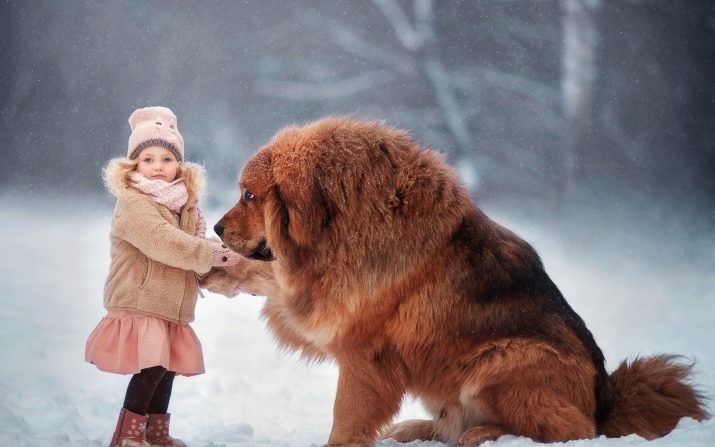
The apartment is nice to contain Yorkshire terriers.Their advantages are the almost complete absence of molting, low appetite, and the absence of the need for long walks. But it is important to remember that Yorkies can attack other four-legged animals and birds, even if the “prey” is many times larger. A negative feature of such terriers is a very difficult care.
The apartment can also contain basenji. This breed is notable for its cleanliness and curiosity. Pet passionately seeks to climb higher. Basenji does not perceive contact with water, and this can cause a number of problems when leaving. But the low growth of the African breed makes it a good candidate for apartment breeding. The survival rate with other pets at this dog is high, but provided that they lived together since childhood. It is worth remembering about such features of the basenji:
- need for significant physical activity;
- the need to strictly regulate the saturation of the diet;
- heat loving (because of it it is required to use clothes in the fall and winter);
- unsuitability for beginners (due to masterful disposition and constant obstinacy).
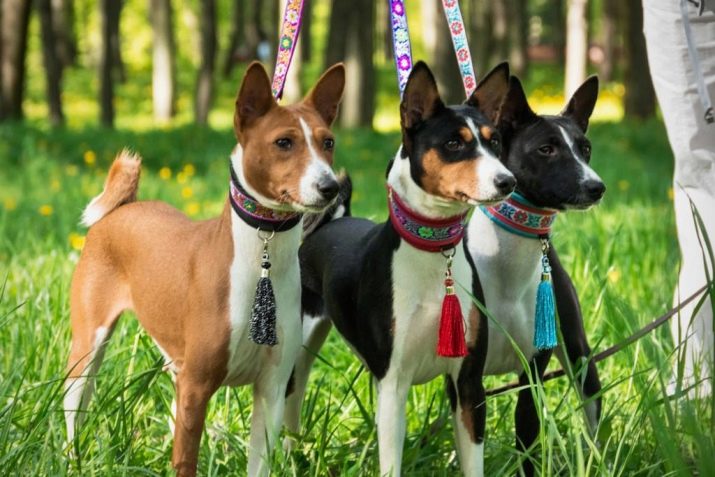
Basenji is not physiologically adapted for barking. But representatives of this breed can make many other sounds. So the owners will have to consider this feature in advance. In the apartment, Pomeranian Spitz also performs better. This animal is modest in size and requires relatively small physical exertion. However, it is worth remembering about such its shortcomings as:
- loud barking;
- the likelihood of aggression to other individuals;
- complexity of maintenance in hot weather;
- weak obedience (if the education is wrong);
- the need for careful care - work with tackles, eyes, teeth, ears, claws.
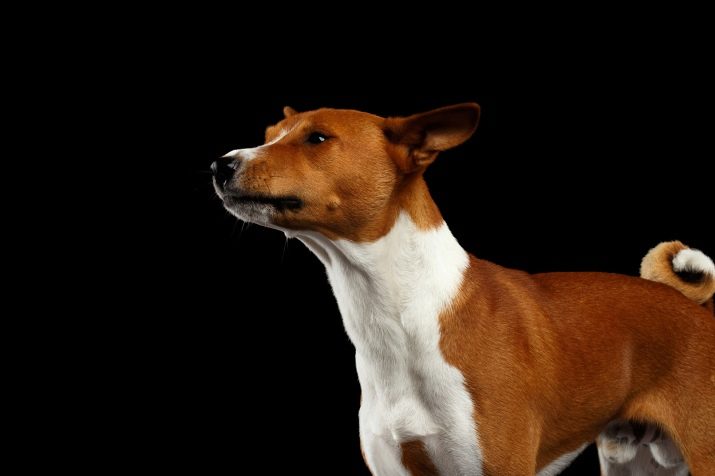
These problems are largely offset by a competent approach. Thus, the normal education of Spitz (including Pomeranian) allows you to train them in various teams and even tricks. The animal will get along well with other pets. The apartment must not contain Asian Spitz. You need to start them in families with children no younger than 10 years old.
If you need to settle a calm dog in an apartment that does not need active recreation, then the best choice would be bulldog. This breed is characterized by great drowsiness, even greater than that of cats. When the owner with the dog goes for a walk, the bulldog will go along with him. Of course, puppies sometimes frolic, however, for them, special long-term pranks are unusual. The bulldog is calm about children and adolescents. You can buy it for a house where there are already cats, you can quite calmly. However, we must remember that many bulldogs are inactive. You will have to make a lot of efforts so that the dog more often shows its strength. Bulldogs snore every now and again, drool. Squeamish and scrupulous people, they are hardly suitable.
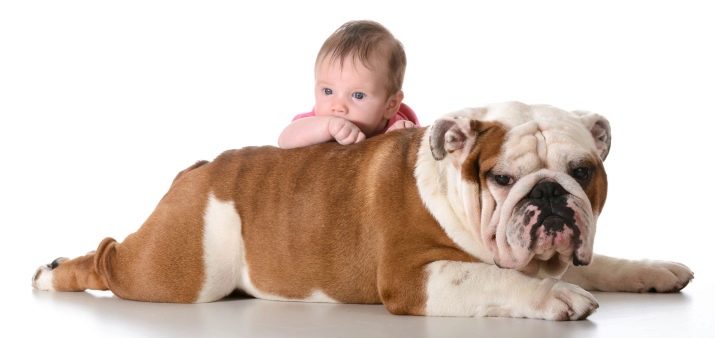
Features of education
Just to get even the best dog in the house with a baby is unlikely to be enough. If it is not taught to interact correctly with the child, it will sometimes be necessary to suffer from the fact that the animal is jealous of children for adults. It cannot correctly understand this situation at its psychological level, therefore it is very important to provide the pet with full assistance. Whatever techniques are used, they are all based on one thing - determining the specific place of the dog in the "pack."
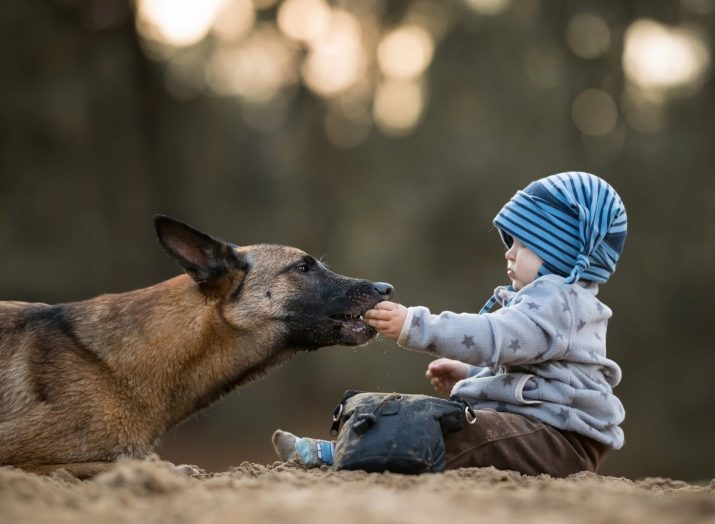
The first and most important rule that all trainers need to consider is the complete rejection of beating pets. This technique is simply ineffective. You do not have to be a great zoologist to understand that no one beats each other in dog packs. Therefore, the dog will not be able to correctly recognize what is required. As a result, his psyche is only substantially damaged, and this can adversely affect behavior regarding children and even adults.

Wolves and feral dogs quite effectively use another channel of communication. The leaders of the flocks bite the low-ranking individuals by the neck or simply dump them on their backs.These methods of expressing discontent are easily understood by animals. An imitation of a bite is very simple: they strain their fingers and vigorously strike them with their tips in the neck. You need to strike from the upper side, where the skin is rough and dense.
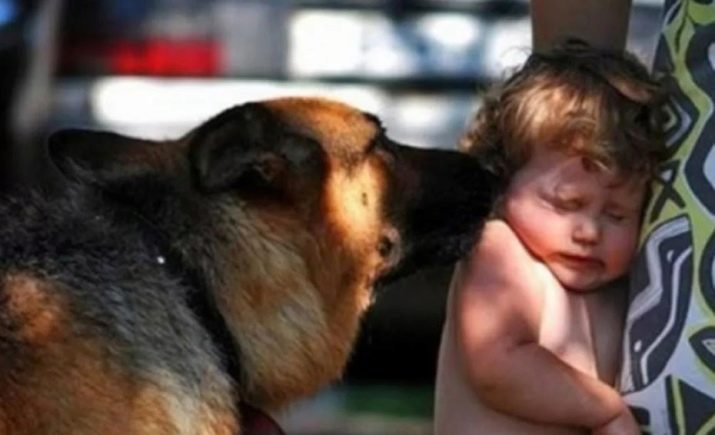
But it happens that reproducing a bite does not help. The dog continues to be "naughty." Then a new “bite” is applied, but the hand is not removed, and the pet is dumped onto the back. The first few attempts will be overshadowed by resistance. You can overcome it by holding the beast by the neck until complete calm. Outwardly, in the opinion of the amateur, it looks very aggressive. However, dog handlers have long established that dogs are fully adapted to this form of exposure and do not experience pain. The next thing to remember when buying an animal in a family is he cannot be on sofas, beds, chairs and armchairs, on other furniture. Only and exclusively people can use it.
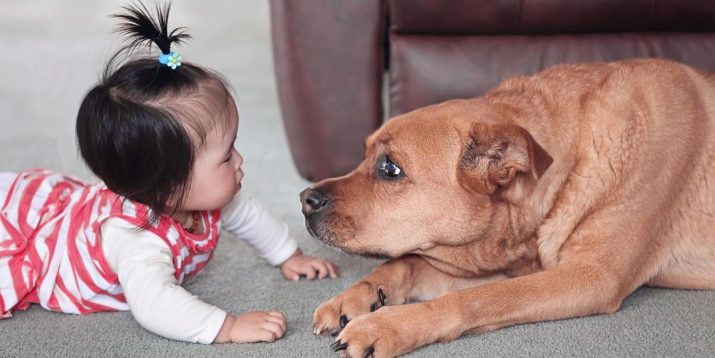
It is necessary to instill a dog and another habit from the very beginning: in the home “pack” people first eat, and only then dogs. But at the same time, it is unacceptable, of course, to violate their normal diet. It is necessary to draw a clear line between the animal and its owners in another respect - when the owners eat, sitting next to them and asking for food is prohibited. It is necessary to categorically abandon the independent presentation of anything from the table.
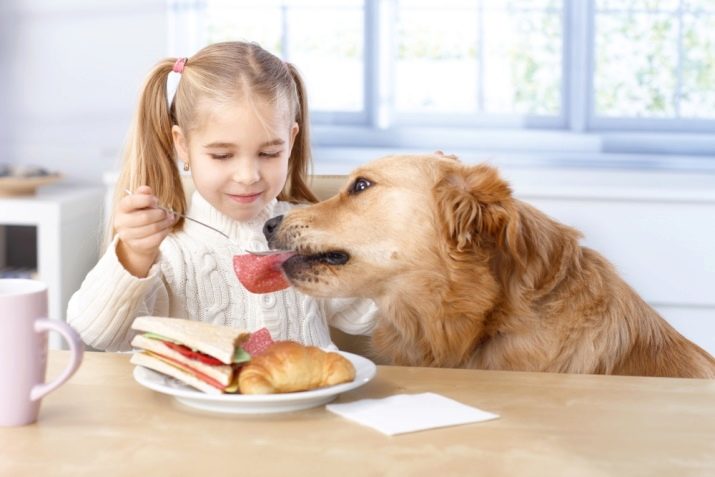
You can often see how adults rejoice watching the game between children and pets. But the instincts of the animal world determine a different attitude to the game than in the human community. What seems like just a fun pastime is actually a workout. And therefore, pets must learn deeply: they cannot, even as a joke or “by chance,” bite any member of the family. But mobile entertainments in the spirit of "give-bring" are necessary and even desirable.
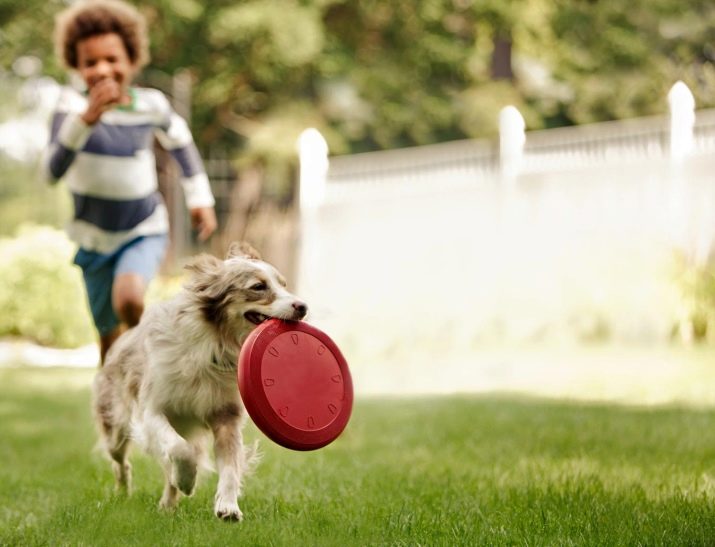
A strict ban applies to jumping on people. It is not difficult to accustom animals to such a restriction: as soon as the dog’s desire to approach a person is outlined, you need to pull the leash. If emotions whip over the edge, you need to force a landing and keep the animal until it calms down. You can even simulate a bite in the neck.
The most important person regarding the dog - the owner - is obliged from the first minutes to make it clear that all family members are dear to him and are under his protection. When the puppy is only brought into the house, they hug and caress everyone who is in it. It is better to carry out the same procedure in relation to pets. The dog is kept at a distance. If this technique does not help to develop the desired setting, they fill up the pet on the back, and put the cat or other dog on top - this is more accurately carried out a certain hierarchy. Connoisseurs are advised to acquire a puppy when the child reaches the age of at least 1-1.5 years. It is required to develop in the beast a habit of not touching kids' toys (and vice versa). This alone will save a lot of conflict situations. You should be prepared for the fact that the puppy will grow up sooner than the child. At some point, it is he who will get the leading role in this pair.

By the time the children go to school (assuming a very early, up to 2-3 years, taking the dog), the situation will change. They will already be on an equal level. But much still depends on the position of the owners themselves. Shouts to the child, his slightest infringement in the presence of a dog are strictly unacceptable. At the same time, moral pressure is almost worse than physical (because the pets very accurately recognize such a situation, although they interpret it in their own way). The manifestation of touching, touching concern for young children can be considered the top of perfection. In this situation, the dogs guard the sleep of children, comfort the crying and worried babies.
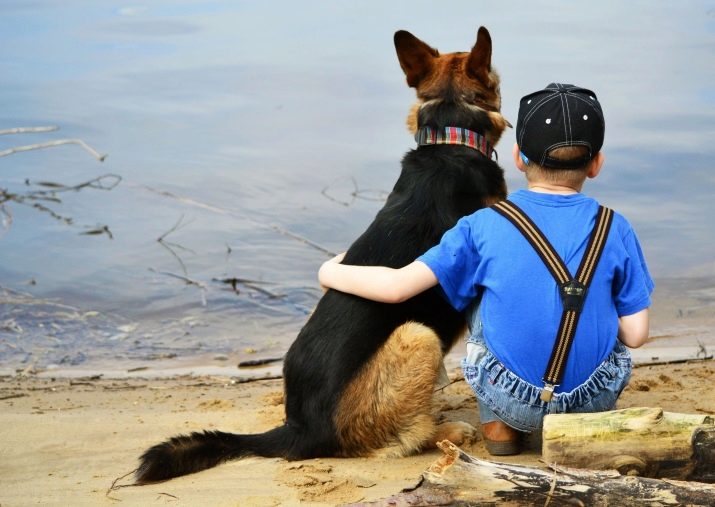
This means that the pet perceived the child in much the same way as his own puppy. But naughty puppies are often punished by adult dogs.Therefore, as soon as children get out of infancy, they will have to closely monitor the reaction of animals to the desire to pull them by the tail, cling to the ears. If the “most important in the pack” at first expresses the correct reaction and does it repeatedly, the necessary reflex will gradually develop. Sometimes another situation arises: for the first time when he sees a master's child, the dog does not react to him at all and goes far.
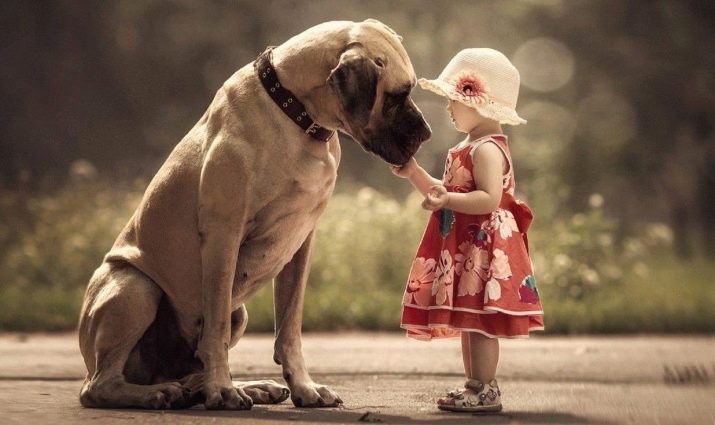
Attempts to impose communication by force then turn into only new problems. When the right time comes, the relationship will inevitably improve. Worst of all is to fight the painful jealousy of dogs for children. Usually it occurs in animals, which before the appearance of the child actually occupied his place. In this case, two extremes must be avoided: leaving the situation without control and severely punishing the dog for any barking at the children.
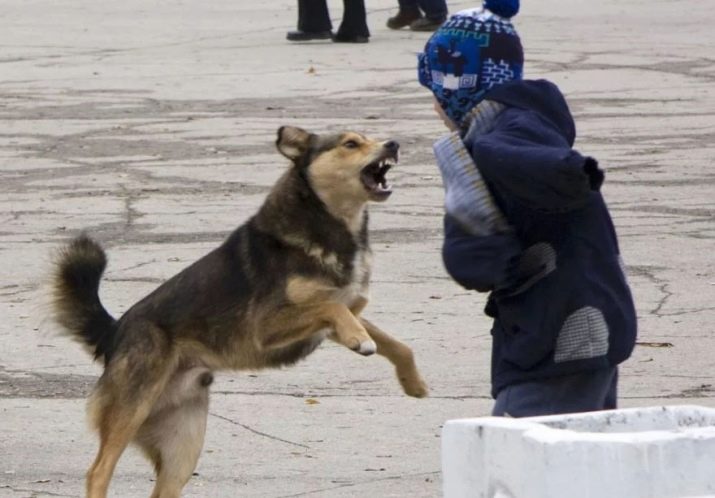
Punishments alone, not supported by other measures, only provoke greater bitterness. A promotion for a normal attitude is certainly required. If the problem becomes lingering, you will have to consult with experienced trainers. If you use their help, you can correct the behavior even in adult dogs. To avoid problems, it is required from the very beginning to select a breed and a specific animal with the participation of the child.
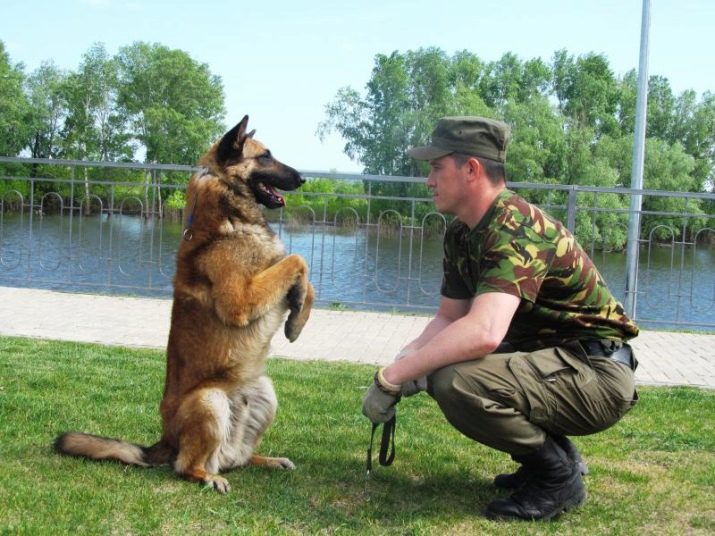
Practice shows that if he really likes a pet, the likelihood of conflict will be much less. It is very important to explain to the child clearly and consistently that the dog has a strict daily routine. It is useful for children and adults to take care of the animal in half. You need to constantly monitor how the child behaves with the puppy. He should not allow deliberately unjust, disproportionate punishments, senseless cruelty and bullying in relation to a living being.
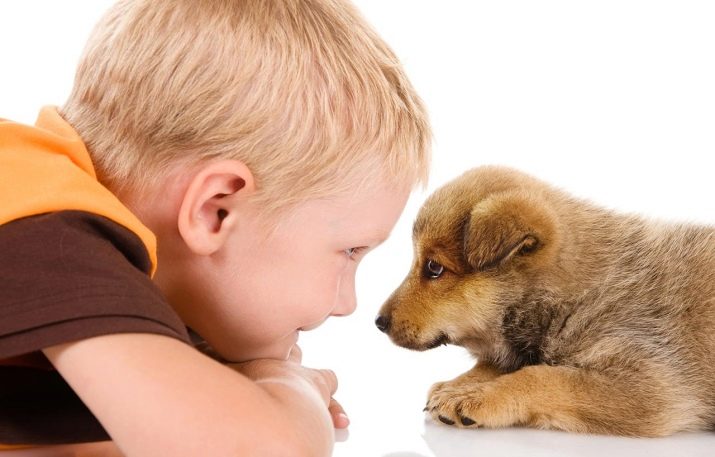
It is very useful even before the institution of the dog to explain to children in a popular and intelligible way what are the characteristics of the psychology and behavior of animals. It is necessary to explain this psychology with concrete examples later. They immediately say:
- what exactly the pet does not tolerate (gestures and actions);
- how he reacts to obsessive and unpleasant behavior;
- what signals the animal gives in a particular situation;
- what are the signs of probable pet aggression.
For information on how to properly raise a dog for children, see the next video.
